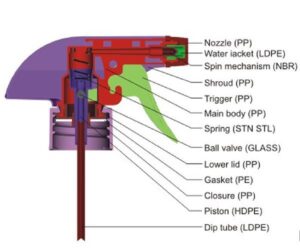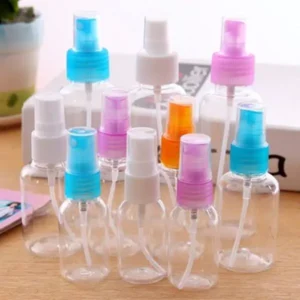If you’re a cosmetic manufacturer, you’ve probably had this experience: You spend months perfecting a new moisturizer—testing formulas, refining textures, and designing sleek packaging—only to get customer complaints rolling in. “The pump leaks in my bag.” “I press it three times and barely get any product.” “It stopped working after two weeks.”
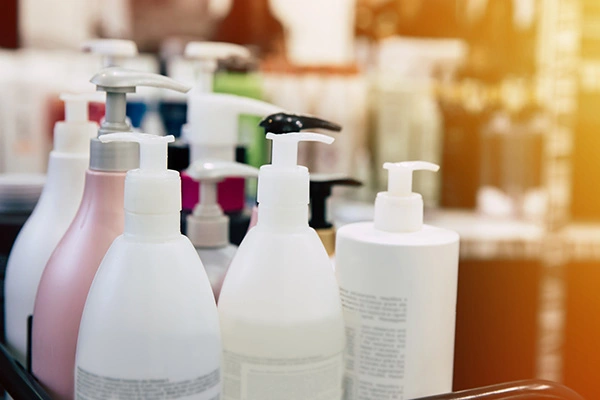
These aren’t just minor inconveniences. A 2024 survey by the Cosmetic Packaging Association found that 38% of skincare shoppers will switch brands after just one bad experience with packaging—and lotion pumps are the top culprit. The right pump doesn’t just dispense product; it protects your formula, preserves user trust, and keeps your brand from ending up in the “returned” pile.
This guide is for the skincare brand owners, packaging buyers, and R&D teams who’ve had enough of settling for subpar pumps. We’re breaking down exactly what to look for when choosing lotion pumps, how to avoid common pitfalls, and how to match pumps to your specific products—so you can stop troubleshooting and start building loyalty.
1、Why Your Lotion Pump Choice Makes or Breaks Your Skincare Line
Let’s start with the basics: Why does a tiny pump matter so much for your brand?
Take a small batch skincare brand we worked with last year. They launched a premium body lotion in a 250ml glass bottle, paired with a cheap plastic pump they found on a bulk marketplace. Within a month, 15% of their orders were returned—most because the pump leaked during shipping, ruining the bottle’s label and the customer’s luggage. Worse, negative reviews mentioned the “shoddy pump” more than the lotion itself.
When they switched to a leak-proof pump with a lock-up mechanism, returns dropped by 28% in 60 days. Their customers stopped complaining about packaging and started raving about the lotion.

That’s the difference a good pump makes. It safeguards three critical parts of your business:
- User experience: A pump that dispenses the right amount, every time, turns “applying lotion” into a seamless ritual—not a frustration.
- Product integrity: Leaks or contaminated pumps can ruin your formula (think: air getting into serums, or lotion seeping into the pump mechanism).
- Brand reputation: In a crowded skincare market, details like packaging quality set you apart from brands that cut corners.
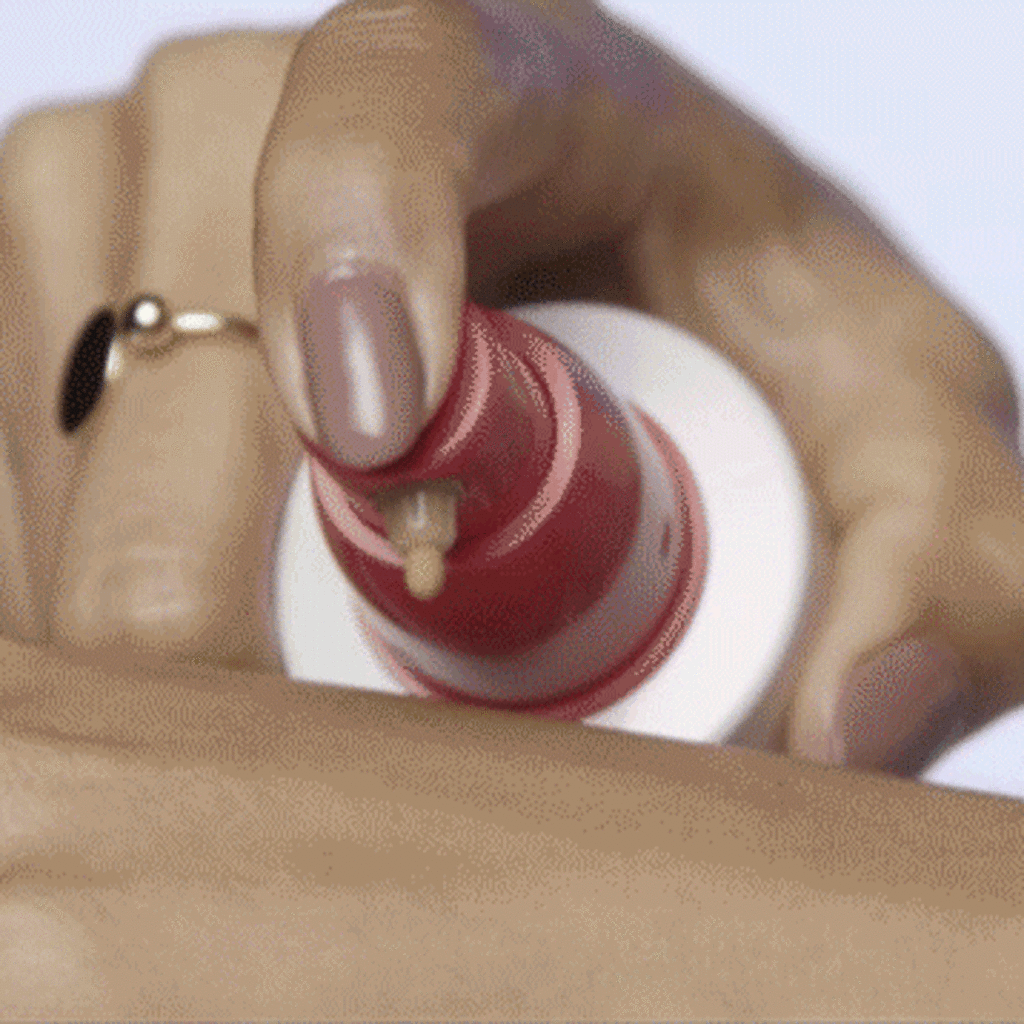
2、5 Non-Negotiable Features to Check Before You Buy
Not all lotion pumps are created equal. Here’s how to spot the ones that will work for your brand—and avoid the ones that will cost you money.
1. Output Volume: Stop Wasting Product (or Disappointing Customers)
Ever used a serum pump that dispenses way more than you need? Or a body butter pump that gives you a tiny dollop, forcing you to press five times? That’s a problem with output volume—the amount of product the pump releases per press.
Most lotion pumps come in 1cc, 2cc, or 3cc options, and choosing the wrong one will hurt your customers (and your bottom line):
- 1cc pumps: Perfect for serums, eye creams, or facial oils. These products are concentrated, so a small amount goes a long way. A 1cc pump prevents customers from wasting expensive formulas.
- 2cc pumps: The sweet spot for most moisturizers, hand creams, and lightweight body lotions. It’s enough product for one use without being excessive.
- 3cc pumps: Best for thick body butters, massage creams, or large-size bottles (500ml+). Thick formulas need more volume to dispense easily, and bigger bottles mean customers expect more product per press.
A client in the UK made the mistake of using a 2cc pump for their thick shea butter lotion. Customers complained about “having to pump 10 times just to get enough,” and the brand ended up losing 10% of their repeat buyers. When they switched to a 3cc pump with a wider intake tube, complaints stopped.
Pro tip: Ask your supplier for sample pumps with different output volumes. Test them with your actual product—never just rely on specs. A 2cc pump might work for a thin lotion but struggle with a thick one.
2. Leak-Proof Performance: Don’t Let Shipping Ruin Your Product
Leakage is the #1 complaint we hear from cosmetic manufacturers. And it’s not just about messy packages—leaks can contaminate your formula, damage labels, and make customers think your product is “low-quality.”
So why do pumps leak? Most of the time, it’s because of two issues:
- Poor seal design: Cheap pumps use single gaskets (the rubber ring that keeps product in) that wear out quickly.
- Low-quality materials: Plastic that warps in heat or cold (like during shipping) will break the seal.
How do you test for leaks? Don’t just take the supplier’s word for it. Do these two simple tests with sample pumps:
- Inversion test: Fill a bottle with water (or your lotion) and attach the pump. Turn it upside down and leave it for 24 hours. If any liquid seeps out, it’s a no-go.
- Transport simulation: Put the sealed bottle in a padded envelope, shake it gently, and let it sit in a warm area (like a car on a sunny day) for 8 hours. This mimics real shipping conditions.
Our pumps use a double-seal gasket (one at the base, one at the nozzle) and food-grade PP plastic that doesn’t warp. We’ve had clients ship our pumps to 40+ countries—from hot Australia to cold Canada—with zero leakage reports.
3. Material Safety: Don’t Risk Chemical Leaching
Skincare products sit in pumps for weeks (or months) at a time. If your pump is made with non-compliant materials, chemicals can leach into your formula—ruining it and putting your customers at risk.
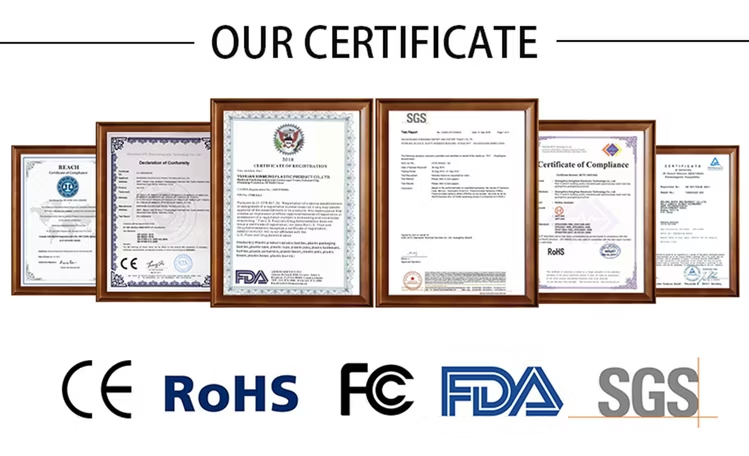
Here’s what you need to look for:
- BPA-free: BPA is a chemical that can disrupt hormones. Even if your bottle is BPA-free, a non-BPA-free pump will contaminate the product.
- FDA-approved: The FDA regulates materials that come into contact with cosmetics. If a pump isn’t FDA-approved, it might have harmful additives.
- EU REACH-compliant: If you sell to Europe, REACH bans 2000+ substances that are unsafe for humans. A non-compliant pump will get your product stuck in customs.
We once had a client who imported 10,000 pumps from a supplier that claimed to be “REACH-compliant”—only to find out the pumps contained phthalates (a banned chemical). They had to destroy the entire batch, costing them $20,000.
Pro tip: Ask your supplier for a copy of their material safety data sheet (MSDS). If they can’t provide one, walk away.
4. Durability: How Many Presses Will It Last?
A pump that breaks after 50 uses isn’t just annoying—it’s a waste of money. Customers will throw away half-full bottles if the pump stops working, and they’ll blame your brand, not the pump.
High-quality pumps should last for 200+ presses (that’s about 2–3 months of daily use for a 100ml bottle). Low-quality pumps? Sometimes as few as 30 presses.
What affects durability? Two key parts:
- The spring: Stainless steel springs don’t rust or break, unlike cheap metal or plastic springs.
- The pump mechanism: Precision-engineered parts (not loose, poorly fitting pieces) will stand up to repeated use.
We worked with a skincare brand that switched from a budget pump (50 presses max) to our stainless steel spring pump. Their customer service team reported a 32% drop in “pump broken” complaints in the first month.
5. Lock-Up Mechanism: For Travel-Size and Retail Display
If you sell travel-size products (10ml–50ml) or display bottles in stores, a lock-up mechanism is non-negotiable. Unlocked pumps leak during shipping, and they can get pressed accidentally on store shelves—wasting product and making your displays look messy.
There are two main types of lock-up designs:
- Twist-lock: Twist the pump head to lock it in place. Great for travel-size bottles, as it’s easy to use and secure.
- Push-down lock: Press the pump down and twist to lock. Better for larger bottles (100ml+) because it’s more durable.
A client who sells travel-size hand cream told us that adding a twist-lock pump reduced their shipping damage by 40%. Before, they had to wrap each bottle in plastic wrap to prevent leaks—now, they don’t need to.
3、Compatibility: Make Sure the Pump Fits Your Containers
You’ve found a pump with great features—but if it doesn’t fit your bottle, it’s useless. Compatibility is one of the most overlooked steps in pump selection, and it’s where many brands go wrong.
1. Bottle Neck Size: The #1 Fitting Issue
Skincare bottles use standard neck sizes, usually written as “24/410” or “28/415.” The first number is the neck diameter (in millimeters), and the second is the thread count. For example:
- 24/410: 24mm diameter, 410 threads (common for 50ml–100ml bottles)
- 28/415: 28mm diameter, 415 threads (common for 150ml–250ml bottles)
If your bottle has a 24/410 neck, a 28/415 pump won’t fit. It’s that simple. But here’s the catch: Some suppliers sell “universal” pumps that claim to fit multiple sizes—most of the time, they don’t.
How to measure your bottle neck:
- Use a caliper (or a ruler, if you don’t have a caliper) to measure the diameter of the bottle’s neck (the part where the threads start).
- Count the number of threads per inch (or ask your bottle supplier for the thread count).
- Give these numbers to your pump supplier—they should match the pump to your exact bottle.
We offer a free compatibility check: Send us a sample of your bottle, and we’ll test which pump fits best. It saves you from ordering 1000 pumps that don’t work.
2. Bottle Material: Glass vs. Plastic
Glass bottles are great for premium brands, but they’re heavier than plastic—so you need a pump that can support the weight. Cheap pumps with thin plastic bases can crack under the weight of a glass bottle, leading to leaks.
For glass bottles, look for pumps with a reinforced base (thicker plastic or a metal ring). For plastic bottles, any standard pump will work—but make sure the pump’s plastic is compatible with your bottle’s plastic (e.g., PP pumps work with PET bottles).
If you have irregularly shaped bottles (curved necks, narrow openings), ask your supplier for a custom pump. We once made a pump for a brand with a triangular bottle—we adjusted the intake tube length and base shape to fit perfectly.
3. Product Viscosity: Thick vs. Thin Formulas
A pump that works for a thin serum won’t work for a thick body butter. Here’s why:
- Thin products (serums, toners): Need a pump with a small intake tube and a precise valve—otherwise, product will drip out.
- Thick products (body butters, thick moisturizers): Need a pump with a wider intake tube (3mm+), a stronger spring, and a larger valve—this lets the thick product flow easily.
We had a client who tried to use a standard pump for their shea butter lotion. The pump kept clogging because the intake tube was too narrow. We switched them to a high-viscosity pump with a 4mm intake tube, and the problem was solved.
4、Customization: How to Make Your Pump Match Your Brand
Your pump is part of your packaging—so it should look like it belongs to your brand. Customization doesn’t just make your product stand out; it builds recognition.
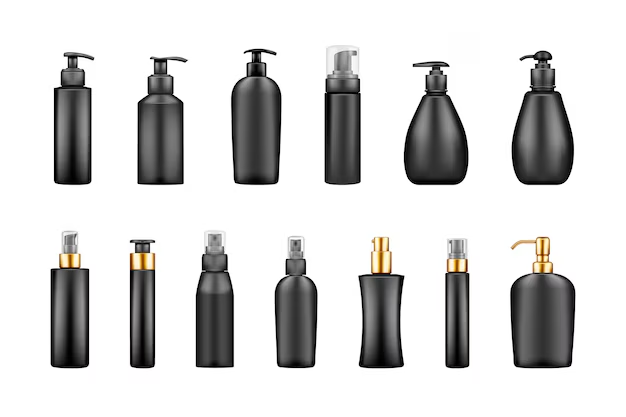
1. Color Matching: Stand Out on Shelves
Most suppliers offer standard colors (white, black, clear), but custom colors let you match your pump to your logo or bottle. For example, if your brand uses a soft pink for its packaging, a pink pump will make your product look cohesive.
We use a Pantone color-matching system—send us your Pantone code, and we’ll make a pump that’s an exact match. The minimum order quantity (MOQ) for custom colors is usually 500 units, but we can lower it to 300 for repeat clients.
A premium skincare brand we worked with used custom gold pumps for their anti-aging line. They told us that the gold pumps made the product look “luxury” and helped it sell 20% faster than their regular line.
2. Logo Printing: Turn Your Pump Into a Marketing Tool
Adding your logo to the pump is a cheap way to boost brand recognition. Every time a customer uses your product, they’ll see your logo—and so will anyone else who sees the bottle.
There are three main ways to print logos on pumps:
- Pad printing: Best for simple logos (1–2 colors). It’s durable and works on most plastic surfaces.
- Screen printing: Better for detailed logos or multiple colors. It’s slightly more expensive but lasts longer.
- Laser engraving: Creates a permanent, high-end mark (great for metallic or dark pumps).
We recommend keeping your logo small (15mm–20mm) and simple—too much detail will get lost on a small pump. Our design team can help you adjust your logo for printing, free of charge.
3. Special Finishes: Add a Premium Touch
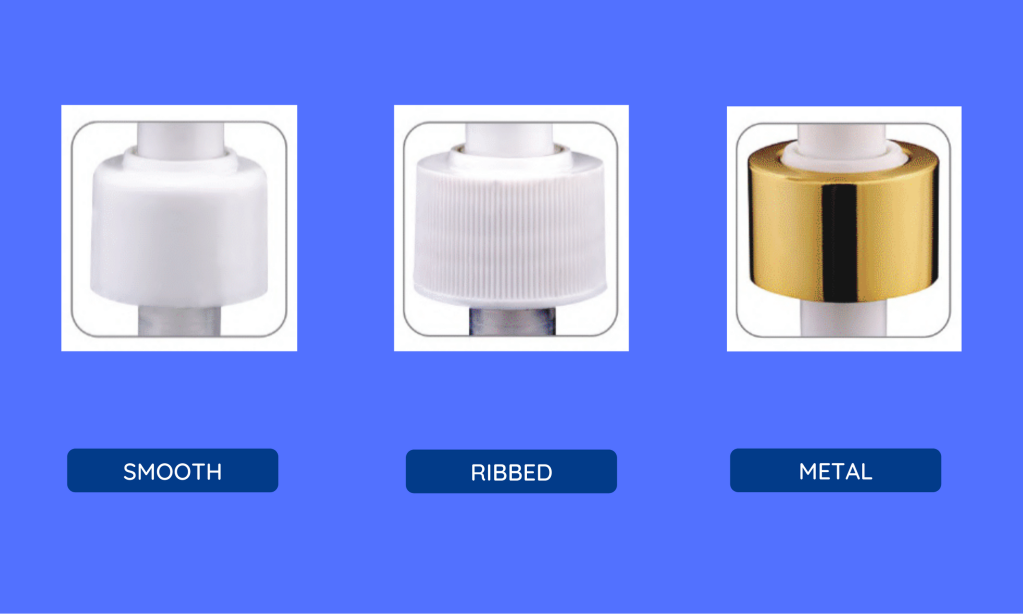
Small finishes can make a big difference. Here are the most popular options:
- Matte coating: Reduces fingerprints and gives a modern, sleek look (perfect for minimalist brands).
- Metallic plating: Gold, silver, or rose gold plating adds luxury (great for anti-aging or premium lines).
- Soft-touch finish: Makes the pump feel smooth and expensive (customers will notice the difference).
Special finishes add a small cost per unit, but they’re worth it if you’re targeting high-end buyers. A client who added a soft-touch finish to their pumps told us that customers commented on how “nice the pump feels” in reviews.
5、Cost vs. Quality: Stop Buying Cheap Pumps That Cost You More
It’s tempting to buy the cheapest pump you can find—especially if you’re a small brand with a tight budget. But here’s the truth: Cheap pumps cost more in the long run.
Let’s do the math. Suppose you buy 1000 budget pumps for 0.50 each (500 total). If 15% of your orders are returned because of leaks or broken pumps, that’s 150 returns. If each return costs you 10 (product + shipping + labor), that’s 1500 in losses—three times the cost of the pumps.
Now, suppose you buy 1000 high-quality pumps for 1.00 each (1000 total). If returns drop to 3%, that’s 30 returns—300 in losses. Over 12 months, you’ll save 1200.
That’s why we tell clients: Don’t just look at the upfront cost—look at the total cost of ownership.
Bulk Discounts: Save Money Without Sacrificing Quality
Most suppliers offer bulk discounts, so it’s worth ordering more pumps if you can. Our pricing structure is simple:
- 1000–2999 pumps: $1.00 each
- 3000–4999 pumps: $0.90 each
- 5000+ pumps: $0.80 each
We also offer flexible MOQs—if you’re a small brand, you can order 300 pumps instead of 1000. It’s a way to test the pump without committing to a large order.
Pro tip: Plan your orders around seasonal demand. If you know you’ll need more pumps for the holiday season (October–December), order them in July. This avoids rush fees and ensures you have stock when you need it.
6、How to Choose a Supplier You Can Trust
Even the best pump design won’t matter if your supplier is unreliable. Here’s what to look for when choosing a partner:
1. Certifications: Don’t Take Their Word for It
A reputable supplier will have these certifications:
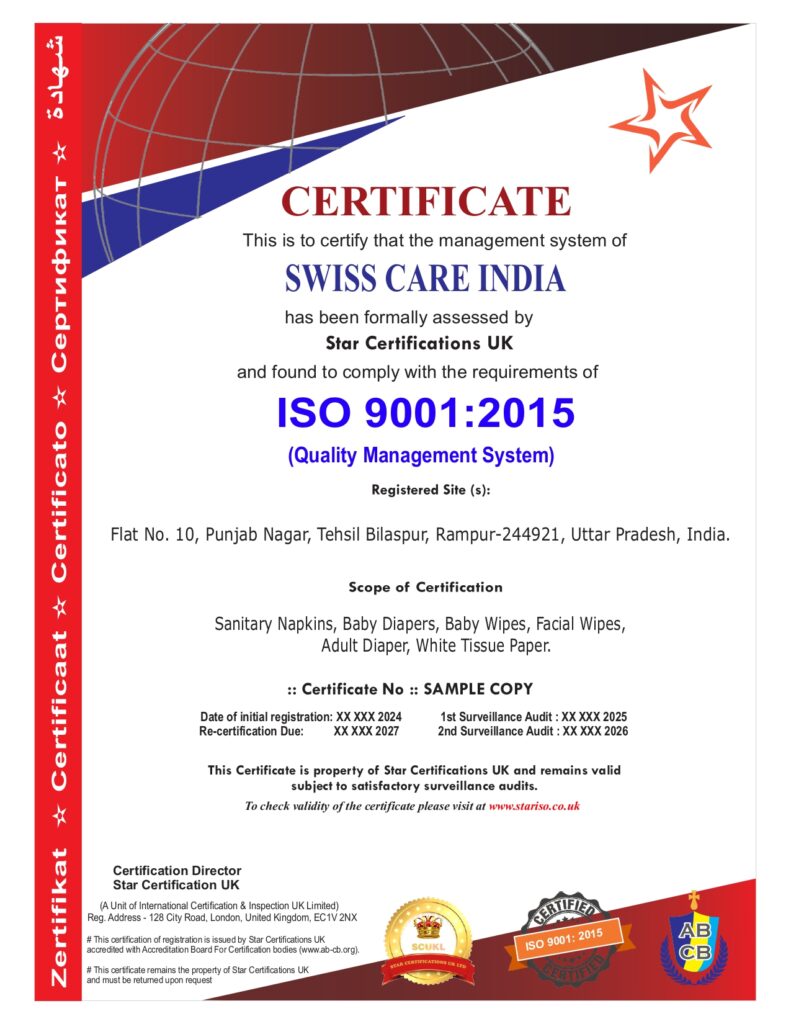
- ISO 9001: Ensures they have a quality management system in place.
- GMP: For cosmetic packaging, GMP means they follow strict hygiene and safety standards.
Ask to see copies of their certifications—not just logos on their website. We’re happy to share our ISO 9001 and GMP certificates, and we even invite clients to visit our factory in China to see our production process.
2. Lead Times: Will They Deliver When You Need Them?
Nothing kills a product launch like delayed pumps. Ask your supplier for their average lead times:
- Standard pumps: 7–10 days
- Custom pumps (color, logo): 15–20 days
We’re transparent about lead times—if there’s a delay (e.g., a material shortage), we’ll tell you immediately and offer a solution (like shipping a partial order first). Our on-time delivery rate is 98%, and we have backup production lines to handle unexpected demand.
3. After-Sales Support: What Happens If Something Goes Wrong?
Even with the best planning, problems can happen. A good supplier will stand behind their product—not leave you stranded when issues arise.
Last quarter, a client in Brazil received a batch of 2000 lotion pumps where 5% of the twist-lock mechanisms were slightly misaligned. They noticed the issue three days before their product launch and panicked—delaying the launch would cost them thousands in pre-booked marketing.
Instead of making excuses, we acted fast: We shipped a replacement batch of 200 pumps via express delivery (at our cost) to arrive in 48 hours, and arranged for the defective pumps to be returned for inspection (we covered return shipping too). The client launched on time, and they’ve since placed three more orders with us.
That’s the kind of after-sales support you need. Here’s what to ask a supplier to ensure they’ll have your back:
- What’s your defect rate policy? Reputable suppliers will guarantee a defect rate of less than 1%—and offer replacements or refunds for any defective products. We cap our defect rate at 0.5%, and we handle replacements within 3–5 business days for standard pumps.
- How fast do you respond to issues? You shouldn’t wait 48 hours for a reply when your launch is at risk. We have a dedicated account manager for every client, and we respond to urgent issues (like defective batches or shipping delays) within 4 hours during business hours.
- Do you offer technical support? If your team is struggling to assemble the pumps or test for compatibility, a good supplier will help. We provide a step-by-step assembly guide with every order, and our technical team is available for video calls to troubleshoot issues.
Avoid suppliers who say, “All sales are final” or “Defects are your responsibility once the product ships.” They’re not partners—they’re just selling you a product.
7、Step-by-Step Checklist: How to Pick Your Lotion Pump (Without the Guesswork)
By now, you know what to look for—but it’s easy to get overwhelmed when you’re comparing 5+ suppliers. Use this checklist to streamline your selection process and make sure you don’t miss anything.
1. Pre-Selection: Define Your Needs (1–2 Hours)
Before you start contacting suppliers, answer these questions to clarify your requirements:
- What type of skincare product will the pump be used for? (e.g., serum, body butter, hand cream)
- What’s the product’s viscosity? (Thin = serum/toner; Thick = body butter)
- What size is your bottle? (e.g., 50ml travel size, 250ml standard size)
- What’s your bottle’s neck size and thread count? (e.g., 24/410, 28/415)
- Do you need a lock-up mechanism? (Yes = travel-size or retail displays; No = large at-home bottles)
- What customization do you want? (Color, logo, special finish—note your Pantone code or logo files if you have them)
- What’s your order volume? (e.g., 500 pumps for a small launch, 5000 for a full line)
- What’s your timeline? (e.g., Need pumps in 2 weeks for a launch)
Writing these down will help you avoid “scope creep” (like deciding you need custom colors halfway through) and make it easier to compare suppliers.
2. Supplier Outreach: Ask the Right Questions (3–5 Days)
Contact 3–4 suppliers (we recommend not just going with the first one you find) and ask these key questions:
- Can you provide samples of pumps that match my needs? (Look for suppliers who offer free samples—we do, with a small shipping fee that’s refundable on your first order)
- What’s your output volume range? Can you provide a 1cc/2cc/3cc sample for testing?
- Do your pumps meet BPA-free, FDA, and EU REACH standards? Can you share your MSDS?
- What’s your lead time for standard vs. custom pumps?
- What’s your defect rate policy, and how do you handle replacements?
- Can you share client references or case studies? (A good supplier will have no problem connecting you with a past client)
Eliminate any supplier who can’t answer these questions clearly or refuses to provide samples.
3. Sample Testing: Put Pumps to the Test (1–2 Weeks)
Once you get samples, test them rigorously with your actual product and bottles. Use this test checklist:
- Fit test: Does the pump screw onto your bottle easily? Is there any gaps between the pump and the bottle neck?
- Output test: Press the pump 10 times—does it dispense a consistent amount each time? Is the volume right for your product?
- Leak test: Do the inversion test (24 hours upside down) and transport simulation (8 hours in a warm, shaken envelope). Any leaks?
- Durability test: Press the pump 50 times in a row—does it still work smoothly? Is there any sign of wear (e.g., loose parts, stuck mechanism)?
- Lock-up test (if applicable): Does the lock work easily? Does it prevent the pump from being pressed when locked?
We once had a client who skipped the durability test and ordered 3000 pumps—only to find that the pumps started sticking after 20 presses. Don’t cut corners here—testing samples will save you from costly mistakes.
4. Final Selection: Choose Your Partner (1 Day)
Compare the tested suppliers based on:
- Quality: Which pump performed best in your tests?
- Price: Does the price fit your budget, considering total cost of ownership (not just upfront cost)?
- Service: Which supplier was most responsive and helpful during the process?
- Timeline: Can they meet your launch date?
Pick the supplier who checks all these boxes—not just the cheapest one.
8、Conclusion: Your Pump Is More Than a Part—It’s a Brand Asset
Choosing the right lotion pump isn’t just about finding something that dispenses product. It’s about protecting your formula, keeping customers happy, and building a brand that stands out in a crowded market.
The small batch skincare brand we mentioned earlier? After switching to our leak-proof pumps, their repeat purchase rate went up by 18%—and they expanded their product line to include three new lotions, all using our pumps.
You don’t have to settle for subpar pumps that cause returns and complaints. By focusing on the 5 non-negotiable features (output volume, leak-proof performance, material safety, durability, lock-up mechanism), checking compatibility with your bottles, customizing to match your brand, balancing cost and quality, and choosing a reliable supplier, you’ll have a pump that works as hard as your skincare formula.
Next Steps for You
- Request samples: If you’re ready to test our lotion pumps, send us an email with your bottle specs and product type—we’ll ship samples within 3 business days.
- Get a free compatibility check: Send us a sample of your bottle, and we’ll test which pump fits best (we’ll even send you a video of the test results).
- Talk to our experts: Book a 15-minute call with our packaging team to discuss your needs—we’ll help you choose the perfect pump for your brand, no obligation.
Your skincare brand deserves a pump that’s as high-quality as your product. Let’s make sure your next launch is free of packaging headaches—and full of happy customers.


